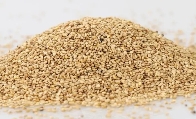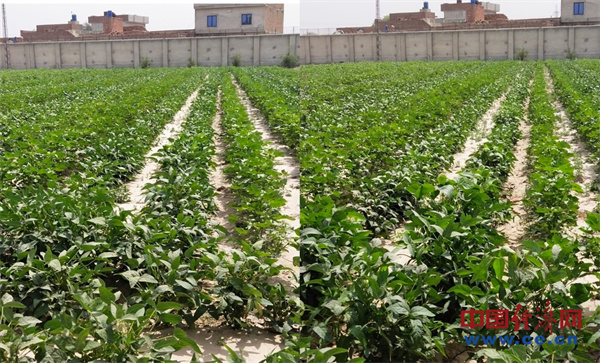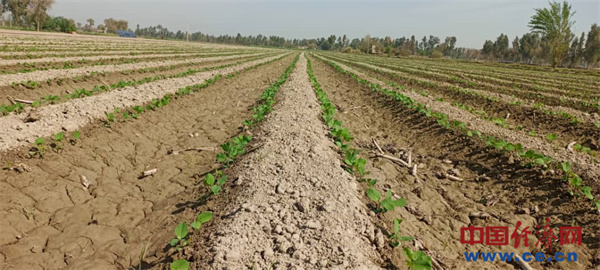Sara Danial
March 18, 2024
Integrating artificial intelligence (AI) into agricultural practices holds immense potential to revolutionise productivity in Pakistan. By leveraging AI-powered solutions tailored to the needs of the agricultural sector, farmers can streamline operations, optimise resource usage, and make data-driven decisions.
However, it is crucial to emphasise that the success of AI integration hinges upon its alignment with the unique challenges and requirements of agriculture. When implemented thoughtfully and ethically, AI technologies can unlock unprecedented levels of productivity and sustainability in the farming sector.
In Pakistan, agriculture is pivotal for economic growth, contributing 21 per cent to the GDP and employing over 42pc of the workforce. The sector’s agro-based products also generate 80pc of the country’s total export earnings. So, it plays a vital role in the economy and livelihoods of millions, hence, the integration of AI is crucial.
It facilitates the prediction of weather patterns, soil quality, groundwater levels, crop cycles, and the detection of plant diseases, all of which are vital decision-changing considerations. Monitoring crop health is enabled by soil and plant sensors, as well as multispectral imagery captured by satellites or drones.
By harnessing tech for predictive analytics and precision agriculture, farmers can enhance crop yields and optimise resource utilisation
Leveraging these insights and innovations can address longstanding challenges such as unpredictable weather patterns, rising temperatures, variability of monsoons, melting of glaciers, water scarcity, and fluctuating market conditions.
By harnessing AI for predictive analytics, crop monitoring, and precision agriculture, Pakistani farmers can enhance crop yields, optimise resource utilisation, and mitigate risks, ultimately bolstering food security and economic stability.
There exists a gap in collaboration between academia and industry, leading to a discrepancy between academic research and its practical applicability in the market. Local universities, including NED University of Engineering and Technology, Institute of Business Administration Karachi, Lahore University of Management Sciences, National University of Sciences & Technology, and FAST National University of Computer and Emerging Sciences, have initiated AI degree programmes, planned specialisations, or established centres for tool and service development.
Agricultural universities such as the University of Agriculture Faisalabad and the University of Veterinary and Animal Sciences are actively exploring AI applications for crop monitoring, disease detection, and solution optimisation. These applications must be aligned with the local scenario and practices.
Pakistan currently holds the highest proportion of young people, as 64pc of the total population of Pakistan is below the age of 30. They possess the potential to evolve into an enormous, well-trained cohort of AI professionals.
Smart farming is a pioneering urban agricultural initiative to establish a hydroponics-based test environment integrated with the Internet of Things (IoT) and AI systems. This integration ensures a controlled and self-sufficient setting for plant cultivation.
Smart farming represents the integration of Web 5.0 technologies into agriculture, exemplified by hydroponics, a soil-less plant cultivation method utilising nutrient-rich water. This endeavor aims to address agricultural challenges in Pakistan by merging physical and digital technologies for optimal sustainability and adaptability.
With a fully monitored hydroponic farming system, IoT interface is also integrated to measure total dissolved solids (TDS), pH, humidity, and temperature. This allows for automated operations, ensuring optimal crop health.
The incorporation of AI into agricultural operations is revolutionising as technology is seamlessly integrated into various aspects of agriculture to enhance efficiency and productivity across the sector.
Specific AI technologies utilised include machine learning algorithms, predictive analytics, and computer vision systems. These technologies enable farmers to make data-driven decisions, optimise resource utilisation, and automate repetitive tasks. For example, machine learning algorithms analyse vast amounts of agricultural data to predict crop yields, identify pest outbreaks, and optimise irrigation schedules.
Computer vision systems, on the other hand, help in crop monitoring and disease detection through image recognition.
The impact of AI-driven solutions on crop yield, resource optimisation, and sustainability practices in Pakistani agriculture is profound. AI algorithms optimise crop production by identifying the most suitable planting times, crop varieties, and fertilisation schedules, leading to increased yields.
AI-powered precision farming techniques minimise resource wastage by precisely targeting inputs such as water, fertilisers, and pesticides, all of which promote sustainable agricultural practices.
Ensuring accessibility and affordability of AI-powered agricultural solutions for small-scale farmers in Pakistan is crucial. Efforts can be made to bridge the technological literacy gap by providing user-friendly interfaces and training programs tailored to farmers’ needs.
Initiatives can be undertaken to make AI technologies financially viable for small-scale farmers through subsidies, grants, and collaborative partnerships with governmental and non-governmental organisations.







